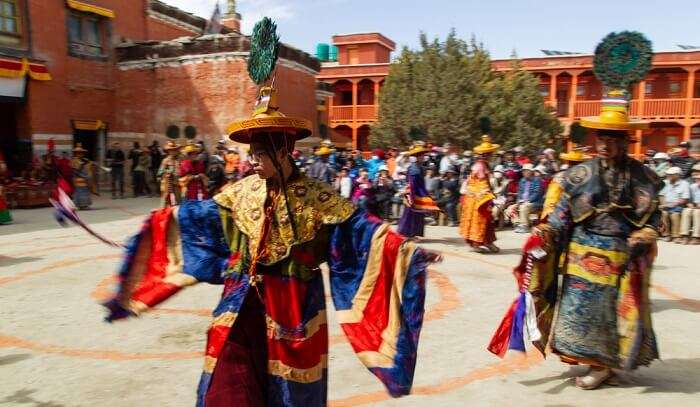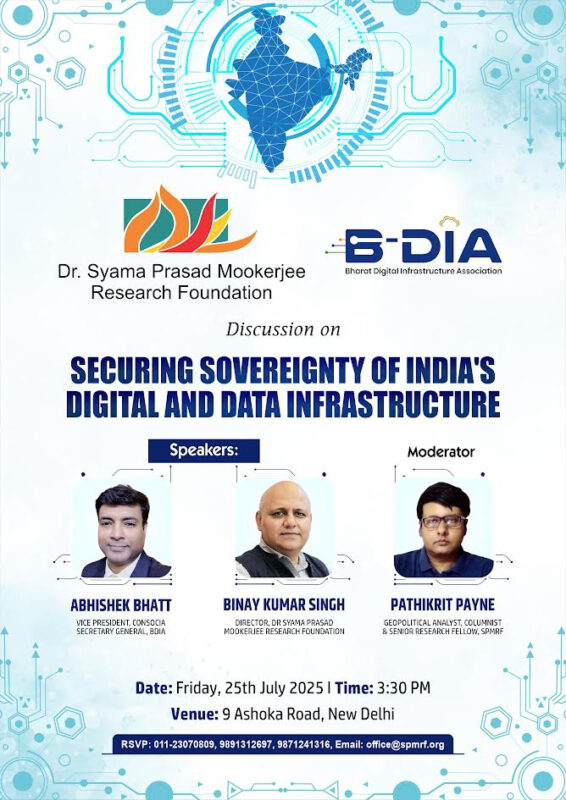What was it that led to the surprise victory of the Bharatiya Janata Party (BJP) in the recent Ladakh Autonomous Hill Development Council (LAHDC) elections?
But for one opinion poll, all others had given the Congress a marginal lead. And, as a result, it was more or less taken for sure, by most of the pollsters, that the Congress would wrest the Council this time, though with a razor-thin majority.
But, as the results poured in slowly, it became more or less clear that the Congress may not be able to lead the race and the margin between the two was too thin to predict anything. Later in the evening of the counting day, the BJP clearly got an edge with 15 seats, and the Congress 9. A party needs 14 seats of 26 to have a simple majority.
The total strength of the Council is 30, out of which 26 members are elected and the four others are nominated from the minority sections. And, among the elected Councillors, a Chief Executive Councillor (CEC) is elected. Another Councillor is appointed as Deputy CEC, and two others are appointed as Executive Councillors. They represent, normally, the eastern, western and northern regions of the district.
The new CEC, also called Chairman, Tashi Gyalson, is a young and dynamic leader, formerly the President of the PDP, Leh unit. He had quit the PDP last year to join the BJP. A lawyer by profession, he is the kind of guy they needed, ‘able and fit’ for the post. His legal background, and his active social work in Ladakh in the last few years seem to have tilted the scale in his favour.
Only three parties were in the fray this time: The BJP, the Congress and the Aam Admi Party (AAP). The AAP’s was a debut contest this time, and the party is led by a retired IPS officer, Tsering Phuntsog. As a ‘new comer’, it contested only for 19 of the 26 seats. As was expected, it could not make an entry into the Council.
What made the difference between the winner and the loser this time is said to be the last-minute intense campaign by the BJP. Many of its Central leaders and ministers had flown into the Leh Valley and, along with the Ladakh MP, Jamyang Tsering Namgyal, they campaigned for almost a week in every nook and corner of Leh district. They promised that if the BJP was elected again, Ladakh would get all its demands fulfilled and that it would be on the road to prosperity in the next couple of years. They tried to convince the people that only a ruling party at the Centre could help them, and hence it was in their interest that they voted for the BJP.
Such a campaign, had a direct bearing with the way people voted. They were convinced that if not now, they could never hope to realise their long-standing demands. They are thankful for the grant of the UT status for Ladakh.
The energetic and optimistic Ladakh MP, popularly known as JTN, whose maiden speech in Parliament had gone viral, too made a definite difference in the BJP’s win. He could win over most fence-sitters, particularly in the Nubra Valley. In fact, just before the elections, he could make hundreds of Congress workers shift ground to the BJP side, in several villages. As a result, all the five seats from Nubra Valley came into the BJP’s lap, en bloc. PM Modi’s narrative of a new Ladakh, the work on the ground in the past one year, the multidimensional development and infrastructure projects that have taken off on the ground have gone a long way in convincing the people of the sincerity of the Modi government in fulfilling their pledge empowering the people of the region and of freeing them from the cycles of deprivation and neglect.
What made the people think, initially, that the Congress would get to rule the Council this time was because of a ‘sudden arising’ of what came to be known as Apex Body of apolitical senior leaders, under the leadership of Thiksay Rinpoche, a former RS MP, to give a call to boycott the Council elections. This body had other senior-most and respected leaders like Thubstan Chewang, a former BJP MP, and Tsering Dorjey Lakrook, a former Minister in the J&K government.
The Apex Body initiated a movement, over a period of two weeks, just before the elections were to be held and they were invited to come to Delhi to hold talks with the Union Home Ministry. The leaders were happy and met Home Minister Amit Shah and his team. The Apex Body leaders were assured that the Ladakhis’ demand for protection would be fully accepted in one form or the other, and that the ‘boycott poll call’ should be withdrawn so that the elections could be held peacefully.
These leaders returned to Leh and assured the people that the Central government had assured them that their demands would be fulfilled after further talks soon after the elections were over. Since these leaders are highly respected by the people in Ladakh, they (people) took it for granted that they would get their dreams fulfilled, and that they would go for the elections.
The Central Government’s contention is that the 6th Schedule as such is not what Ladakh really needs. In the north-eastern states where the 6th Schedule is in force, it is not the same in features. Therefore, the Central Government says that Ladakh’s culture and land etc. can be and will be protected in other ways, not necessarily under the 6th Schedule. The issue with the Central government is that if the 6th Schedule were to be applied in Ladakh, then the Constitution has to be amended which will be not only be time consuming but difficult as well because Parliament too has to be involved in the process.
The Union Home Ministry’s assertion is that it has “other ways” to safeguard the identity of the Ladakhis and also to protect their land. When and how such a solution can be worked out is yet to be seen because the Apex Body leaders are yet to meet the Home Minister. The invitation for talks is there but, because of Covid-19, the Apex Body leaders have not been able to make it happen as yet. Once they have the talks, only then a clear picture will emerge.
One of the significant things to be noticed this time was the absence of the National Conference (NC) and the People’s Democracy Party (PDP) on the political scene of the Leh region. Ever since Ladakh became a Union Territory in August, 2019, these two parties lost their relevance in Ladakh. Therefore, the leaders left their parties and joined either the BJP or the Congress. As a result, both these parties ‘disappeared’ from the political scene of Leh district. But, in Kargil, the Muslim-majority district, these parties are still there, and have a good foothold in the region. They do have a good number of followers, and the future elections are likely to be fought between them and the rest.
The demand for UT status for Ladakh has been there for the last 70 years. To begin with, the movement for UT status was led by the 19th Kushok Bakula Rinpoche who dominated Ladakh’s political scenario for decades. The Rinpoche’s demand, right from the time of the reorganisation of states, was to have Ladakh under the Central government. But the then Prime Minister, Jawaharlal Nehru, did not accept the idea and made the Rinpoche come around to the idea of merging Ladakh into Jammu and Kashmir. But the Rinpoche never stopped agitating for the grant of UT status until his death on the 4th of November, 2003.
Another interesting development that took place in Ladakh politics recently is the emergence of the so-called Gupkar Alliance, led by Farooq Abdullah. A Gupkar Alliance team, led by Omar Abdullah, former J&K CM, visited Kargil, the twin district of Ladakh. In a day-long campaign, joined by the local parties, they sought to strengthen the Gupkar Alliance and canvassed for a movement for the restoration of Articles 370 and 35A. In what was another surprise, the local unit of the Congress Party took no time in announcing its affiliation with the Gupkar Alliance.
But, surprisingly, it was a ‘no surprise’ that the team went back to the Valley without visiting Leh district, knowing very well that they can’t have a foothold over there. The irony of Ladakh politics is that a section of politicians in Kargil want to be with Kashmir, and not under the Central government, and this ‘wishful thinking’ has been made known repeatedly by them publicly from various fora.
And to put in the concluding lines, now that there is a new Hill Council in place, under the BJP, in Leh, people are very optimistic about their future. The local MP’s repeated assertion that ‘Modi Hai To Mumkin Hai’ have been well received by most of the people of this far-flung border district of India. And the Central government very well knows that the welfare of the Ladakh region plays a key role in the security of the nation.
(The writer is a New Delhi-based editor-at-large, columnist and professional speaker. The views in this article are his own.)
Pictures suggested: Hill Council complex, and Ladakh Palace in Leh
(The views expressed are the author's own and do not necessarily reflect the position of the organisation)


